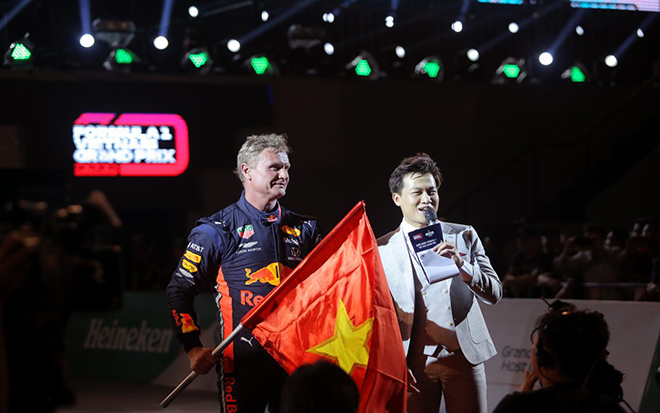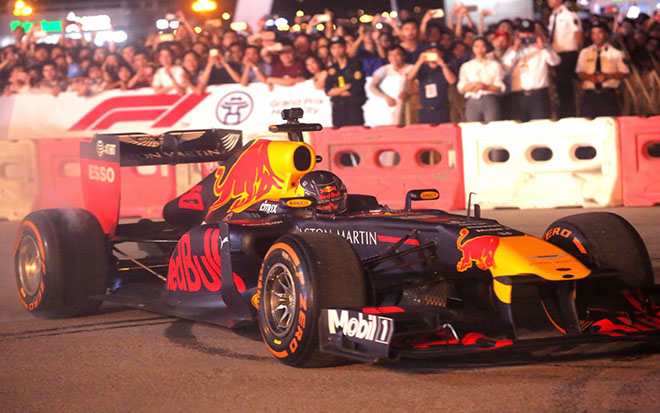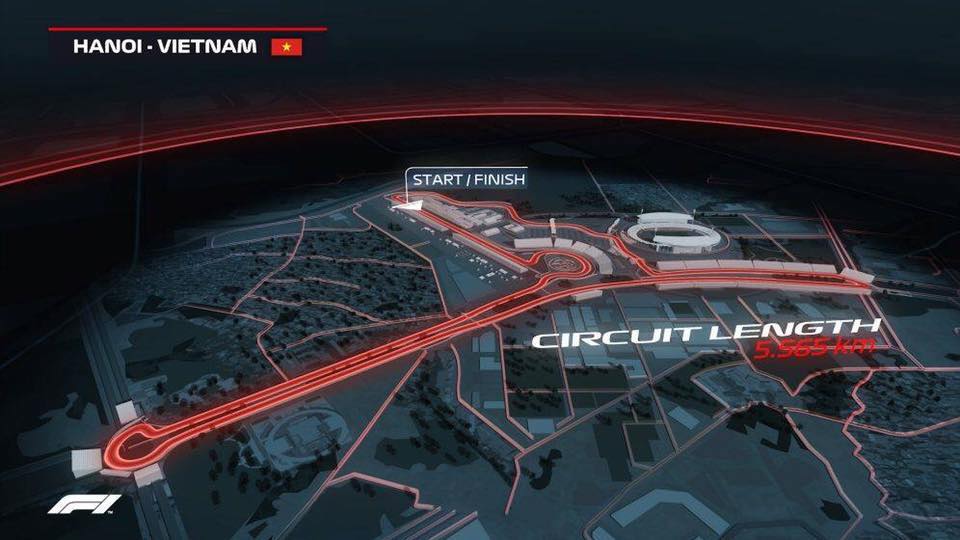For the first time to host the most fantastic race in the world, Vietnam has been constructing a brand new circuit for the Grand Prix Hanoi 2020. A lot of preparation a lot for the ultimate experience of both the racers. While the audience has been done and the world is exciting to see the new F1 race in Vietnam, the specialists state that this can be the most unique ever built. Let’s have a quick look at the Hanoi circuit and see what you can expect from that.

What Has Been Revealed
Not only organizing a large-scale international car race for the first time, but Vietnam also promised to possess a distinguished racing track. Although it is also built on existing roads like in Monaco, Singapore or Azerbaijan, the Hanoi circuit is still distinct:
- Only half of the trail is public roads (like other current circuits).
- The other half is on the exclusive campus of My Dinh sport complex.
There are not too many skyscrapers. But in return, it is spacious with the state of the art infrastructure. Situated in a sparse area, My Dinh Sports Complex can that can easily expand and develop additional constructions for the use of Grand Prix 2020.

Another striking feature of Grand Prix Hanoi 2020 is the participation Hermann Tilke in the designing. Used to be a racing driver, he seems to know everything about F1 track like the back of his hand. This is also the company behind the world-renowned Circuit of The Americas and Abu Dhabi’s Yas Marina. Fused the elegance of German architect with Vietnamese indigenous culture, Tilke promised to make a masterpiece out of Hanoi circuit.
Up til now, what we have known about Vietnamese F1 track is:
- It has an incredible length of 5,565 km, ranked 20 out of more than 70 circuits and also the longest race in Southeast Asia.
- There are 22 different turns, 333 straights.
- Length of each straight vary among 675 m, 880m, 1,500m.
In the longest straight line, the maximum speed that the car can reach up to 335 kph, which plays a crucial role in competition among riders. On the other hand, the turns will be the technical challenge of the racers. They will have to speed up extremely fast and accurately to maintain their position and even to take advantage of competitors who don’t handle the situation well.
Ongoing Projects
Since March 20, 2019, Hanoi People’s Committee together with Vietnam Grand Prix Organization has started a new part in the construction of F1 race track in Nam Tu Liem. According to notice from the Committee, Formula 1 race in Hanoi (F1 Hanoi) and other functional facilities will be built on a total area of 88 hectares within the campus of the My Dinh Stadium Complex and parts of the public roads, running through the Le Quang Dao, Le Duc Tho streets.
Accompanied with the track, some functional areas and support items such as operation center, individual roads for replacing tires (Pit), track support area, racers’ housing area … are also being built in the selected area. Meanwhile, a number of stands at racing corners will be designed and built within the “open” direction along the track. The standing areas are portable, so it’s easy to expand in case of a huge crowd.
It is expected that in March 2020, all preparation for the F1 race in Hanoi will be completed to be ready for the opening ceremony in April 2020. Can’t wait to see the longest Grand Prix Circuit in Southeast Asia!
Hanoi Grand Prix Race Track: Inspiration From All Over The World
When it comes to Hanoi Grand Prix Race Track, we shouldn’t miss its significant design inspiration.
Every speed enthusiast knows that F1 is an excellent combination of stunning corner sequences with overlapping turns, making it one of the most difficult worldwide. Therefore, creating new tracks based on the previous ones is reasonable.
Hermann Tilke with his team Tilke Engineers & Architects also applies that notion for Hanoi circuit. The company targeted to build a one-of-a-kind hybrid layout, blending a long-lasting countryside track layout with essential characteristics of a street circuit. The ultimate purpose is to blur the confines between two opposites, making the city’s topography as a whole.
There was such a genuine desire. To color grading 90-degree road-junction type corners and to enhance a layout that assists wheel-to-wheel racing is a great challenge, let alone maintaining a closed-in street feel for both audience and racers.
But with the hand of Tilke, we can still hope to see an aesthetic work of art in Vietnam.

Turns 1 and two are inspired by the opening corners at Germany’s Nurburgring. F1 enthusiasts call it a red zone for overtaking because Juan Pablo Montoya out of a sudden swept by Giancarlo Fisichella in 2006. Turns 1 and two will be an ideal path for racers to using special techniques such as the long straight for slipstream to compete with each other.
Another reminiscent of Hanoi race track is Monaco street circuit, which runs uphill Massenet. Turns 12-15 is based on this construction with several modifications to fit the actual topography.
The sweeping icon of Esses at Suzuka, Japan is also taken inspiration for the Turn 16 to 19.
The final three corners feature the fast left-right entry from Malaysia’s Sepang. This is a challenging and tricky final sequence. It can be risky and require some profession to complete the lap. The ending of Hanoi race paves the way for a chasing driver to take on a slipstream and launch an attack into the other competitors.
Travel Sense Asia is willing to bring you closer the most prestigious motor race on Earth by customized package for visitor to cherish the show and relish the beauty of Vietnam at the same time. Our travel experts will help you update the information and give you the best consultancy for your travel.
- Location: Hanoi, Vietnam
- Total Circuit: 5,565 km
- Date and time: The entire race takes place from April 3rd to April 5th.
The first day (April 3rd) will be a racing trial for the drivers to test the road, the second day (April 4th) is a qualifying race to decide the commencing position on the final round, and on Sunday, the 5th of April, all the racers will enter the main race to reach the podium stage. On the final day of the Hanoi Grand Prix 2020, the drivers will run 55 laps, equal to 306,075 km distance to find out the winner.
- Ticket Categories:
- General Admission: From 700,000 VND ($30) for one-day pass, no seat provided
- Grandstand: From 1,560,000 VND ($70) for one-day pass, seats in the stands
- Hospitality: From 19,740,000 VND ($860) for one-day pass, brilliant view with high-quality service
Contact us via email sale@travelsense.asia or hotline +84.899861177 (viber/whatsapp) to get more details





Comments